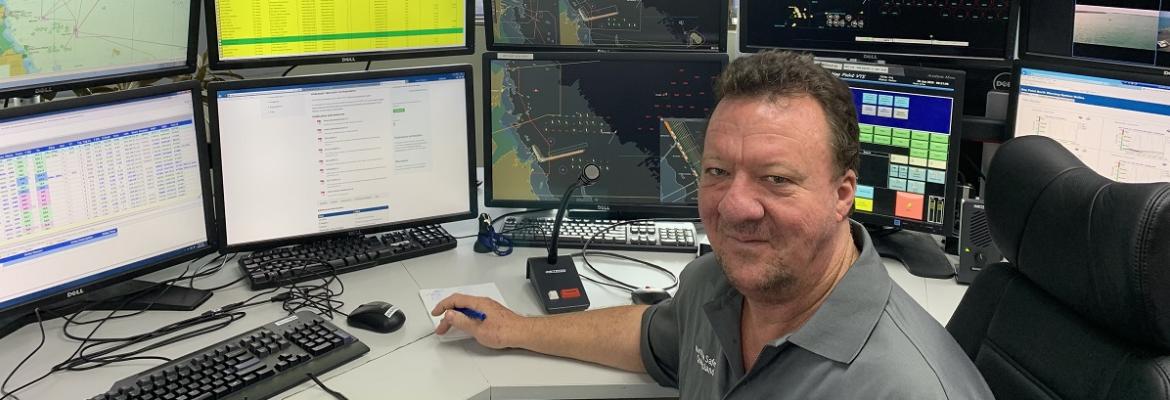
Mr Bath was nominated for the award after coordinating the response action of allied services including tugs, port pilots and helicopter operators when reports came through of a bulk carrier drifting 20 metres off the berth at 1 am on 21 April 2019.
‘The bulk carrier Aquavoyageurs was 289 metres long and fully loaded so it was sitting 18 metres below the waterline,’ Warren said.
‘Because so much of the ship was under water, the pressure of the tide peeled the ship from the birth—it all happened really quickly,’ he said.
‘As soon as I was notified I started checking the windows for the ship to sail and it so happened that there was an inbound ship to berth, and as a result, the tugs were out there for the other terminal at Dalrymple Bay.’
‘I managed to get the tugs over to Hay Point to help push up on the ship, but by the time they got there the ship was already 90 degrees off the berth and the master had dropped its anchor.’
Dropping the anchor stopped the ship from spinning around more and breaking away from the berth all together, but because it was at 90 degrees, they couldn’t use the lines to pull it back around.
The immediate danger was the structural failure of the ship, which in turn would have had serious flow-on impacts for the surrounding infrastructure, the marine environment and the movement of other ships in and out of the port.
‘When in port ships sit in a berth pocket, which has been dredged out so it can sit comfortably alongside. The pocket is curved, so if the ship ends up sitting across the curve like in this case, when the tide goes out it would break its back because the middle of the ship would be in the middle of the berth pocket,’ Warren explained.
‘There were two options—one was to sail the ship out of the port, but to do that you would have needed a pilot on board and tugs organised—it would take hours to plan,’ he said.
‘The limiting factor with this option was the time—only 10 minutes remained before the tidal window for the ship to exit the port closed, so that wasn’t an option—we had to put the ship back alongside the berth.’
Warren contacted the other terminal at Dalrymple Bay to advise the berthing of the other ship would be delayed.
‘When I spoke to the VTS there I organised for the pilot bringing the other ship in to come to the Aquavoyageurs by helicopter in order to assist get the ship back alongside. We managed to get the ship back in its berth before the tide went out enough to cause serious damage.’
Mr Bath’s quick response ensured the vessel was brought back alongside within three and a half hours with no damage to the bulk carrier, other ships berthed at the port, the offshore terminal infrastructure or pollution event.
The annual Australian VTS Award recognises an outstanding contribution by a VTS beyond their normal operational scope.
Find out how to nominate for the Australian Vessel Traffic Service Award.